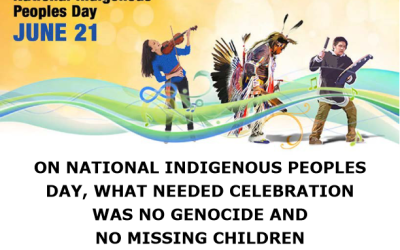Toddler Asia Saddleback was seriously wounded last week in a drive-by shooting on Alberta’s Samson Reserve. In January, Santana and Kaydance Pauchay, one and three years old respectively, froze to death on Saskatchewan’s Yellowquill Reserve.
If one barometer of the health of a society is the way it treats its children, this country’s reserve system is in deep trouble.
Not that this would be big news to most Canadians. A stroll through too many reserves tells a story of poverty, lack of housing and absence of pride of place.
Everyone is familiar with the problems of teen suicide, alcohol abuse, unemployment and high school dropout rates experienced by the minority of aboriginals who continue living on reserves.
Now, a new report by the Winnipeg-based Frontier Centre for Public Policy is urging a change in aboriginal policy — by adopting lessons from the Maori experience.
A 10-page report by the right-leaning think-tank asserts: “Canada should look to New Zealand as a model for improving the lives of its indigenous populations.” The key, according to the report by Metis researcher Joseph Quesnel, is greater self-reliance for native people, and more education.
Quesnel cites data from a 2007 study of aboriginals in four countries — Canada, the U.S. , New Zealand and Australia. All four saw modest improvement in their standing between 1990 and 2000.
But the Maori made the greatest gains, with better educational attainment and higher incomes.
The 2007 study points out that Maori are culturally more homogenous than Canada’s indigenous peoples. And they’ve never had a system of reserves. They have integrated into the broader community. Nor do they receive large transfer payments from the New Zealand government.
Quesnel recounts that, in 1984, New Zealand determined to change its policies to accede to a Maori desire for more independence; it handed over powers enabling the indigenous people to determine their own development and deliver their own services.
The Maoris received a one-time payment of cash and assets following treaty settlements. By 2003, the Maori’s tax contributions were greater than any government transfers they received. And, with 22 Maori MPs, they accounted for 20 per cent of government representation.
Here’s the important point: “There was an understanding that any movement toward indigenous cultural and political self-determination had to be accompanied by economic self-reliance. They could not call themselves self-governing while receiving handouts and massive government transfers.”
By contrast, Quesnel says, Canadian federal and provincial governments hand over $18 billion in transfers to Canada’s aboriginals, “with little to no tax transfers back.”
In Canada there does not appear to be a similar thrust toward greater fiscal self-reliance to accompany the longstanding native goal of self-government. Neither natives nor government talk about cutting back funding.
Indeed, all political parties, with the exception of Conservatives, continue to lobby for the Kelowna accord, the 2005 federal deal that would have transferred $5 billion to reserves over a 10-year period to upgrade health, housing and education services.
“Are the frequent calls for increased funding and transfer payments the way to improve?” Quesnel asks. “It would seem they are not.”
But if Canada’s aboriginals are to become more self-reliant they need their own financing sources. Which makes it essential that land claims be quickly settled to fully recognize aboriginal title to ancestral lands. Native people could then use the land, and its resources, to develop a viable economy for themselves.
Without adequate revenue sources, native people have been leaving reserves to look for work. The 2006 Census reveals 54 per cent of aboriginals live off reserve. Quesnel predicts reserves in Canada will become ever-smaller as more aboriginals opt to urbanize. Looking to the Maori experience, this may be no bad thing.
One positive in the report: Quesnel notes life expectancy for Canada’s aboriginals increased from 70.6 in 1990 to 72.9 in 2000 — highest among the four populations studied.
Regardless of how long it takes to reach treaty settlements, no matter how government policy shifts, education and the financial self-reliance flowing from it are the keys to bettering the lot of Canada’s aboriginals.

